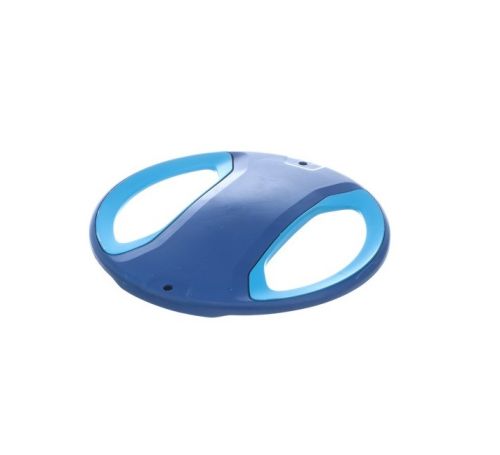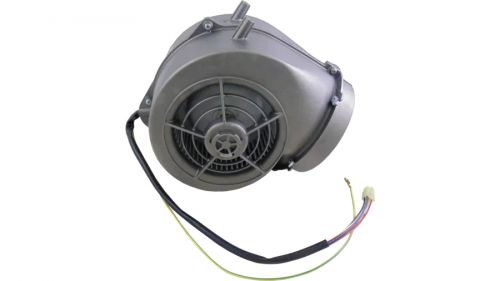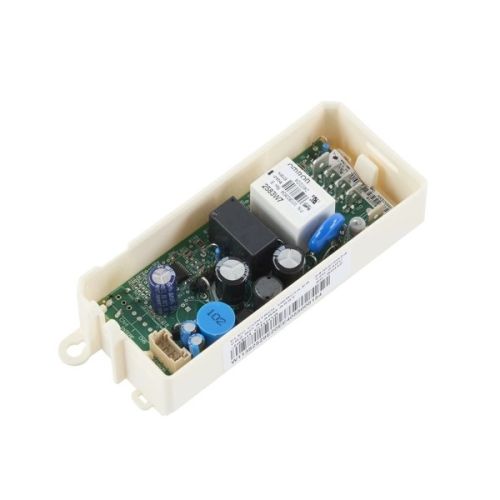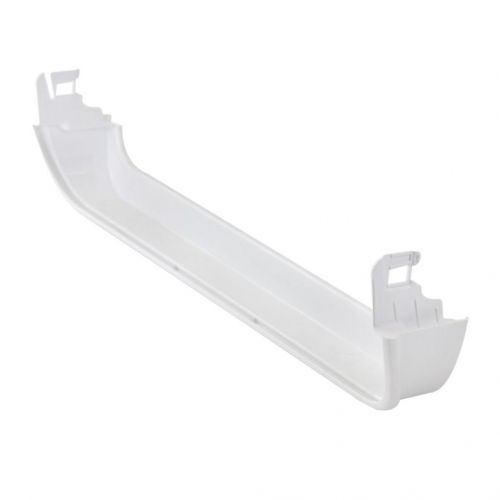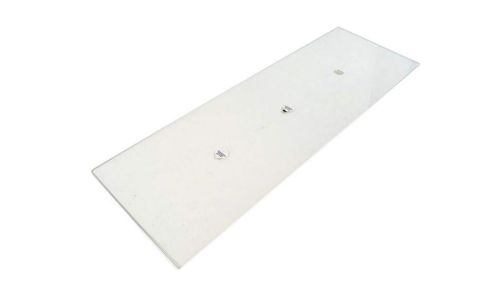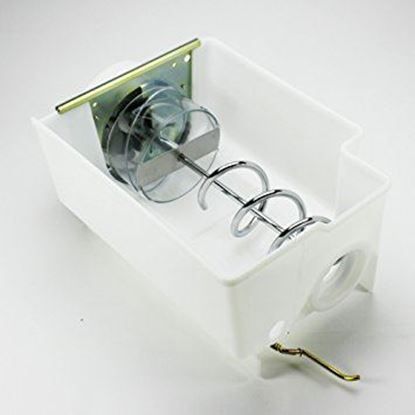
DIY Fridge Fix: How to Test a Refrigerator Thermostat
Is your fridge thermostat not working? In the realm of appliance troubleshooting, a malfunctioning refrigerator thermostat can lead to temperature inconsistencies and potential food spoilage. Understanding how to test a refrigerator thermostat is essential for ensuring the effectiveness and longevity of this vital component. This article delves into comprehensive guidance on diagnosing and testing a refrigerator thermostat using simple techniques and tools.
What is a refrigerator thermostat and how does it work?
A refrigerator thermostat is a crucial component that regulates the temperature inside the refrigerator to ensure the proper preservation of food. It functions by monitoring the internal temperature and activating the cooling system as needed to maintain the desired level. The refrigerator thermistor also measures temperature and communicates with the thermostat to regulate cooling.
Typically, the thermostat consists of a temperature-sensitive probe connected to a control unit. When the temperature rises above the set level, the thermostat triggers the compressor to start cooling. Once the temperature drops to the designated point, the thermostat signals the compressor to stop. This continuous cycle ensures that the refrigerator maintains a consistent and safe temperature for storing perishable items. Therefore, the thermostat plays an integral role in preserving food freshness and preventing spoilage.
Signs of a faulty refrigerator thermostat
We know that the refrigerator thermostat is a crucial component that regulates the temperature inside the appliance. When it begins to malfunction, it can lead to a range of issues affecting the freshness and safety of your stored food. Being aware of the signs of a faulty refrigerator thermostat can help you address the problem before it escalates. Here are some common faulty fridge thermostat symptoms:
-
Inconsistent temperature: One of the most noticeable signs of a faulty thermostat is the inconsistent temperature inside the refrigerator. You may find that certain areas are too cold while others are too warm, leading to uneven cooling and potential food spoilage.
-
Spoiled food: If you notice that your food is spoiling quicker than usual, it could be a result of the refrigerator not maintaining the correct temperature due to a faulty thermostat.
-
Display not working: A thermostat display not working can indicate a faulty thermostat. If the display fails to light up or respond to temperature adjustments, it may signal underlying issues. This can lead to inaccurate temperature control and must be addressed promptly to maintain proper refrigerator functionality.
-
Frequent cycling: A malfunctioning thermostat might cause the refrigerator to cycle on and off more frequently than normal. This constant cycling can lead to excessive energy consumption and potential wear and tear on the appliance.
-
Inaccurate temperature settings: If the temperature settings on the refrigerator seem to not affect the actual temperature inside, it could be a sign that the thermostat is failing.
-
Frost buildup: Excessive frost buildup in the freezer compartment, or even in the refrigerator section, can indicate a problem with the thermostat or the defrost system.
-
Warm refrigerator: If the refrigerator feels warm to the touch, especially when it should be cool, it could be a sign of thermostat malfunction.
-
Faulty compressor operation: A faulty thermostat can cause the compressor to run continuously or not at all, impacting the overall cooling efficiency of the refrigerator.
If you notice any of these signs, it's essential to have a qualified technician inspect and potentially it's time for refrigerator thermostat replacement.
Tools and equipment needed to test the refrigerator thermostat
To conduct a refrigerator thermostat test, you will need the following tools and equipment:
-
Multimeter: Use this to measure voltage, resistance, and continuity.
-
Screwdriver set: Different sizes and types will be necessary for accessing the thermostat.
-
Insulated gloves: Safety is key when dealing with electrical components.
-
Thermometer: Use this to gauge temperature changes and accuracy.
-
User manual: Refer to the refrigerator's manual for specific instructions and diagrams.
-
Safety goggles: Protect your eyes from any potential hazards during the testing process.
-
Replacement thermostat (optional): In case the current one needs to be swapped out.
These items will help ensure a thorough and safe testing process for the refrigerator thermostat.
Know more about How To Change Water Filter In Fridge: The Ultimate Guide
How to Check Temperature Inside Refrigerator
Use a refrigerator thermometer or a regular kitchen thermometer.
-
Place the Thermometer: Put the thermometer in a glass of water and place it on the middle shelf of the refrigerator for an accurate reading.
-
Wait: Allow some time (at least 5-10 minutes) for the temperature to stabilize.
-
Read the Temperature: Check the thermometer to see if the refrigerator is maintaining a temperature between 34°F and 40°F (1°C to 4°C), which is optimal for food safety.
How to Check if a Fridge Thermostat is Working
Check for any visible signs of damage or malfunction like corrosion or broken wires.
-
Test with the Multimeter: Testing the fridge thermostat with a multimeter to determine if it is functioning correctly.
How to Test Fridge Thermostat with Multimeter
-
Unplug the Refrigerator: For safety, disconnect the refrigerator from power.
-
Locate the Thermostat: The thermostat is usually found inside the fridge compartment. You may need to remove a cover to access it.
-
Disconnect the Wires: Carefully disconnect the thermostat wires, noting their positions for reassembly.
-
Set the Multimeter: Turn your multimeter to the resistance (ohms) setting.
-
Test the Thermostat: Place the multimeter probes on the terminals of the thermostat.
-
If the thermostat is working properly, you should get a reading of zero (or very low resistance) when the thermostat is in the "on" position (set to a cold setting).
-
If the reading is infinite (infinity), the thermostat is faulty and should be replaced.
How to Test a Refrigerator Temperature Sensor?
To test the fridge thermostat, you can follow these general steps:
-
Access the thermostat: Locate the thermostat within the refrigerator. This may involve removing the control panel or accessing the area behind the temperature control knobs.
-
Set the multimeter: Turn on the multimeter and set it to the lowest ohms of resistance. This setting is usually indicated by the omega symbol (Ω).
-
Test in warm conditions: Place the thermostat sensor in the ice water and wait a few minutes for the temperature to stabilize. Then, use the multimeter to test the continuity across the thermostat terminals. If the thermostat working properly, it should show continuity.
-
Test in cold conditions: Next, remove the thermostat sensor from the ice water and let it warm up to room temperature. Again, use the multimeter to test the continuity across the thermostat terminals. There should be no continuity when the sensor is warm.
-
Interpret the results: If the thermostat shows continuity in cold conditions and no continuity in warm conditions, it's likely functioning as intended. If the results are opposite or inconsistent, the thermostat may need to be replaced.
Remember to consult the refrigerator's manual for specific instructions and safety precautions before attempting any testing or repairs. If you are unsure about the process, it's best to contact a qualified technician for assistance.
Know more about How To Clean Refrigerator: A Comprehensive Guide
Adjusting the refrigerator thermostat
To adjust the refrigerator thermostat control, follow these general steps:
-
Locate the thermostat: Find the temperature control knob or slider inside the refrigerator. It's usually located in the fresh food compartment.
-
Set the Desired temperature: Depending on the type of thermostat, you may need to turn the knob to the desired temperature setting or slide it to the desired level.
-
Monitor the temperature: After adjusting the thermostat, allow the refrigerator to run for a few hours. Here are the next refrigerator temperature settings. Use a separate thermometer to check the temperature inside the refrigerator to ensure it has reached the desired level.
-
Fine-Tune if necessary: If the temperature is still too warm or too cold, make further adjustments to the thermostat and continue monitoring until the ideal temperature is consistently maintained.
Know more about How To Install Refrigerator Water Line
Troubleshooting the refrigerator thermostat
For refrigerator thermostat troubleshooting, follow these steps:
-
Check for power supply: Ensure that the refrigerator is receiving power. Verify that the power cord is plugged in properly, and the circuit breaker or fuse is not tripped.
-
Inspect the thermostat setting: Examine the thermostat control settings to ensure they are set at the correct temperature. Make necessary adjustments and allow time for the refrigerator to respond to the new settings.
-
Clean the thermostat sensor: Dust and debris can affect the accuracy of the thermostat. Clean the sensor with a soft brush or cloth to remove any buildup that may be interfering with its function.
-
Test the thermostat: Utilize a multimeter to test the continuity of the thermostat at different temperature settings. Follow the manufacturer's guidelines for testing procedures, which may involve using ice water to simulate colder temperatures.
-
Check for faulty wiring: Inspect the wiring connected to the thermostat for any signs of damage or disconnection. If any issues are found, consult a professional technician to address the wiring effectively.
-
Verify airflow and ventilation: Adequate airflow within the refrigerator is essential for temperature regulation. Verify that the vents and airflow passages are not blocked by items placed inside the refrigerator.
-
Assess for system malfunctions: If the thermostat troubleshooting does not resolve the issue, there may be underlying system malfunctions such as compressor or fan problems. In such cases, it's advisable to seek professional assistance for a comprehensive diagnosis and solution.
Know more about How To Replace Refrigerator Compressor
Maintenance tips to prevent refrigerator thermostat issues
To prevent refrigerator issues and ensure optimal performance, consider the following thermostat maintenance tips:
|
Tips |
Description |
|
Regular Cleaning |
Clean the thermostat sensor with a soft brush or cloth to remove dust and debris. |
|
Consistent Temperature Checks |
Use a separate thermometer to verify that the temperature aligns with the thermostat setting. |
|
Check Door Seals |
Inspect and clean door seals; replace them if worn to prevent warm air entry. |
|
Avoid Overloading |
Maintain proper spacing between food items and keep vents clear for better airflow. |
|
Manage Ventilation |
Ensure vents and airflow passages are not blocked to support proper temperature regulation. |
|
Address Defrosting Promptly |
Defrost manually when frost buildup appears to prevent thermostat malfunctions. |
|
Professional Maintenance |
Schedule periodic professional maintenance for thorough inspection and servicing. |
Testing a refrigerator thermostat is an essential aspect of maintenance to ensure optimal cooling performance. By following the outlined steps using a multimeter and ice water, homeowners can effectively gauge the thermostat's functionality. Regular testing, along with proactive maintenance, helps identify issues early and promotes efficient temperature regulation in the refrigerator, contributing to its longevity and reliability. Look no further than HnK Parts for refrigerator parts. Find high-quality components including compressors, door seals, and water filters to keep your refrigerator running efficiently.
FAQs
What is the difference between a thermistor and a thermostat?
A thermistor is a type of temperature sensor, while a thermostat is a temperature control device.
How do you test a refrigerator thermistor with a multimeter?
To test a refrigerator thermistor with a multimeter, set the multimeter to the resistance setting and place the thermistor's probes to measure the resistance, referring to the refrigerator's manual for specific values.
How to tell if a refrigerator thermostat is bad?
A bad refrigerator thermostat may cause temperature fluctuations, excessive cooling, or failure to cool at all. Check by turning the thermostat dial; if there’s no clicking sound or temperature change, the refrigerator thermostat may be faulty.
Why is my fridge thermostat not working?
A fridge thermostat not working could be due to dirt buildup, electrical failure, or a broken sensor. Test with a multimeter for continuity; if there's no reading, replace the thermostat.


